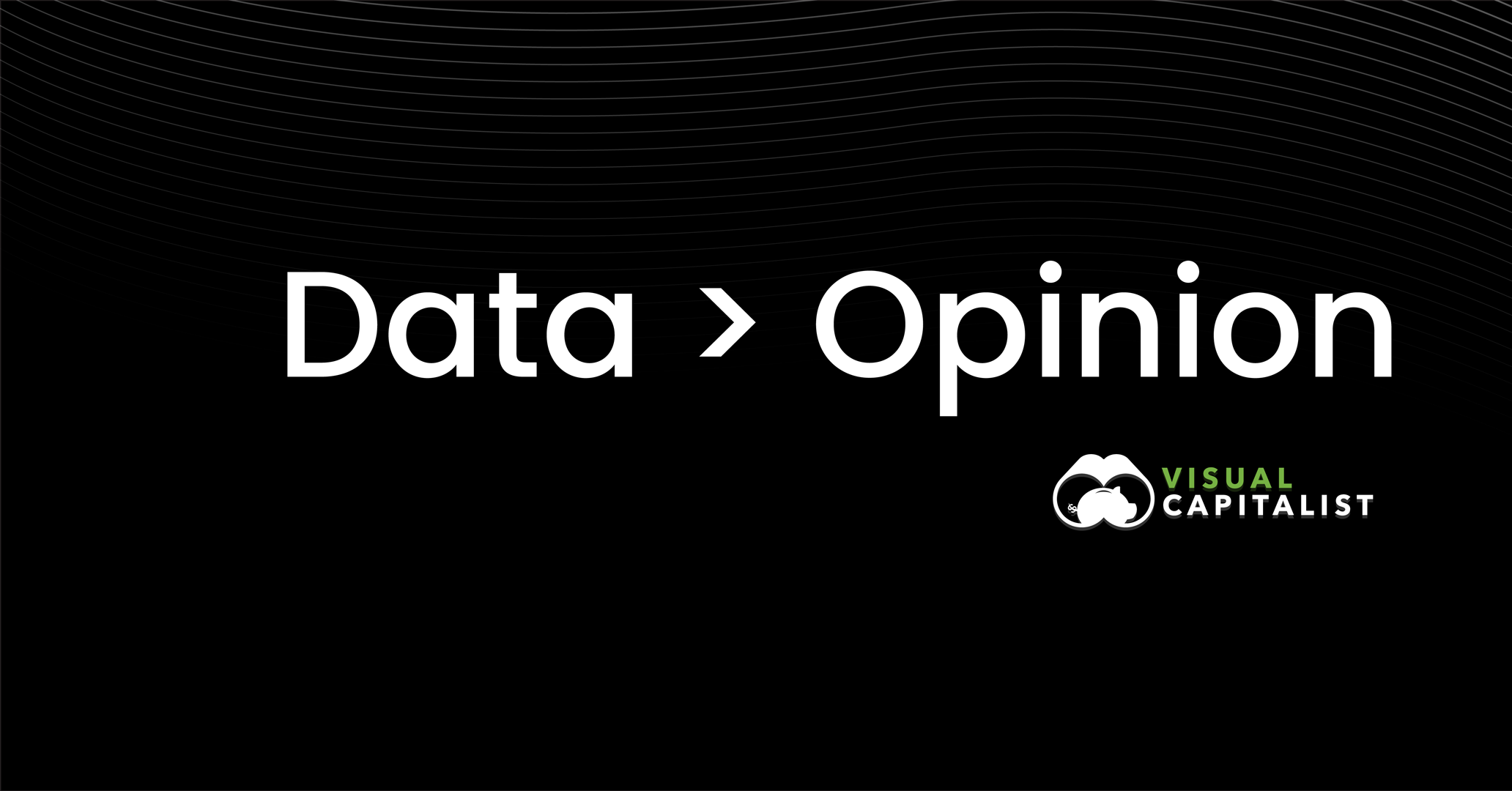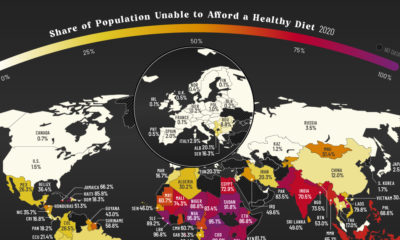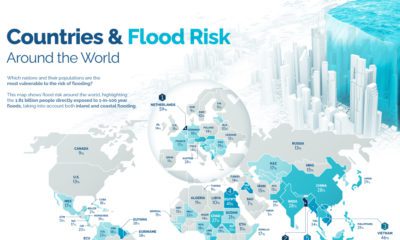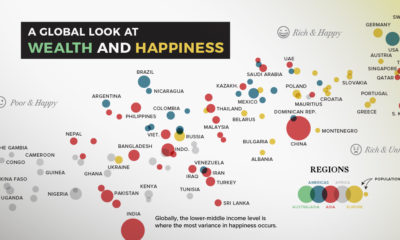Even as early as a decade ago, if you were backpacking in a foreign place, it was not uncommon to rely on the wisdom printed in travel guides such as Lonely Planet or Rick Steves to choose your day-to-day activities. “Go off the beaten path to see this secluded black sand beach that’s only used by locals.” “See this historic city tour, because it’s a hidden treasure that you won’t find in any other guidebook.” Tips like these felt like secrets only privy to you and other smart readers – and while you were sitting on that hidden black sand beach, you could revel in the fact that the rest of the travelling masses were stuck in a two-hour line to get into some silly tourist trap. For better or worse, things are now very different.
The Crowdsourced Era
Today’s infographic comes to us from Vouchercloud, and it shows the top rated “Thing to Do” for every single country in the world, according to Tripadvisor reviews. In other words, the list is based on the amalgamation of millions of reviews from fellow travelers that have experienced these sights or activities first-hand. On the upside, these reviews are coming from your peers. People just like you have rated all of the attractions in an area – from tourist trap to hidden gem – and the end result is pretty fair and democratic. But this democratic component also has a downside. In the United Kingdom, for example, the highest rated activity is not seeing Big Ben, Ancient Roman baths, Stonehenge, or the Churchill War Rooms – it’s the Harry Potter Studio Tour, with 32,000+ reviews and 83% of reviewers giving it a perfect 5-star rating. While the Harry Potter tour is obviously a popular attraction, it’s not likely representative of the type of attractions that old school travel critics may have raved about in their travel books.
Top Things to Do
In the map, the top tourist destinations are broken down based on the type of attraction. Here’s the mix of top destinations for the 197 countries and jurisdictions included in the analysis: The top category of attraction is natural (38.6%), which includes places like Canada’s Niagara Falls or Norway’s Geiranger Fjord. Meanwhile, historic attractions like China’s Great Wall made up 27.4% of the total, and places of religious significance such as Thailand’s Temple of the Reclining Buddha were the top tourist attraction for 14.7% of the countries. The remaining category, called “Tourist” includes a much wider variety of destinations within it. These attractions range from Central Park in the New York City to the aforementioned Harry Potter Studio Tours in the United Kingdom. The wide category also includes museums like France’s Musee d’Orsay, which holds a staggering collection of impressionist art, as well as Germany’s Miniatur Wunderland, which is a massive miniature railroad in Hamburg. on Even while political regimes across these countries have changed over time, they’ve largely followed a few different types of governance. Today, every country can ultimately be classified into just nine broad forms of government systems. This map by Truman Du uses information from Wikipedia to map the government systems that rule the world today.
Countries By Type of Government
It’s important to note that this map charts government systems according to each country’s legal framework. Many countries have constitutions stating their de jure or legally recognized system of government, but their de facto or realized form of governance may be quite different. Here is a list of the stated government system of UN member states and observers as of January 2023: Let’s take a closer look at some of these systems.
Monarchies
Brought back into the spotlight after the death of Queen Elizabeth II of England in September 2022, this form of government has a single ruler. They carry titles from king and queen to sultan or emperor, and their government systems can be further divided into three modern types: constitutional, semi-constitutional, and absolute. A constitutional monarchy sees the monarch act as head of state within the parameters of a constitution, giving them little to no real power. For example, King Charles III is the head of 15 Commonwealth nations including Canada and Australia. However, each has their own head of government. On the other hand, a semi-constitutional monarchy lets the monarch or ruling royal family retain substantial political powers, as is the case in Jordan and Morocco. However, their monarchs still rule the country according to a democratic constitution and in concert with other institutions. Finally, an absolute monarchy is most like the monarchies of old, where the ruler has full power over governance, with modern examples including Saudi Arabia and Vatican City.
Republics
Unlike monarchies, the people hold the power in a republic government system, directly electing representatives to form government. Again, there are multiple types of modern republic governments: presidential, semi-presidential, and parliamentary. The presidential republic could be considered a direct progression from monarchies. This system has a strong and independent chief executive with extensive powers when it comes to domestic affairs and foreign policy. An example of this is the United States, where the President is both the head of state and the head of government. In a semi-presidential republic, the president is the head of state and has some executive powers that are independent of the legislature. However, the prime minister (or chancellor or equivalent title) is the head of government, responsible to the legislature along with the cabinet. Russia is a classic example of this type of government. The last type of republic system is parliamentary. In this system, the president is a figurehead, while the head of government holds real power and is validated by and accountable to the parliament. This type of system can be seen in Germany, Italy, and India and is akin to constitutional monarchies. It’s also important to point out that some parliamentary republic systems operate slightly differently. For example in South Africa, the president is both the head of state and government, but is elected directly by the legislature. This leaves them (and their ministries) potentially subject to parliamentary confidence.
One-Party State
Many of the systems above involve multiple political parties vying to rule and govern their respective countries. In a one-party state, also called a single-party state or single-party system, only one political party has the right to form government. All other political parties are either outlawed or only allowed limited participation in elections. In this system, a country’s head of state and head of government can be executive or ceremonial but political power is constitutionally linked to a single political movement. China is the most well-known example of this government system, with the General Secretary of the Communist Party of China ruling as the de facto leader since 1989.
Provisional
The final form of government is a provisional government formed as an interim or transitional government. In this system, an emergency governmental body is created to manage political transitions after the collapse of a government, or when a new state is formed. Often these evolve into fully constitutionalized systems, but sometimes they hold power for longer than expected. Some examples of countries that are considered provisional include Libya, Burkina Faso, and Chad.
















